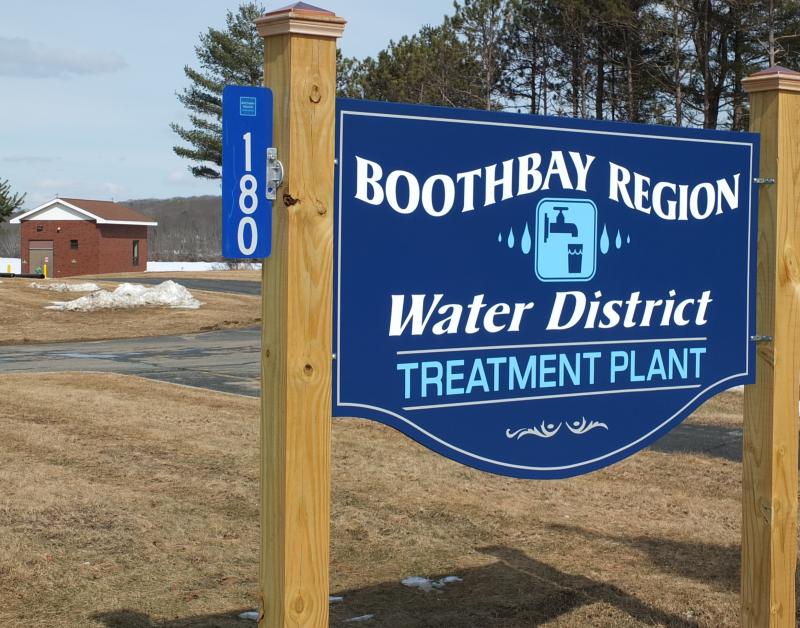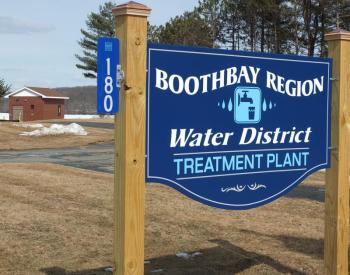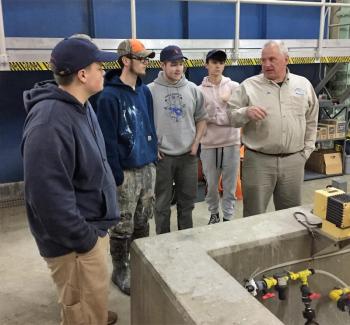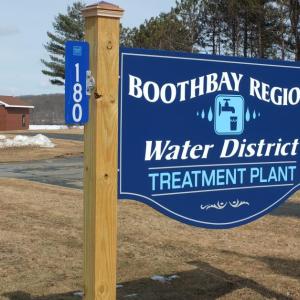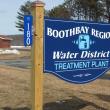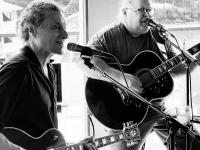BRWD does more than provide peninsula fire protection
Safe drinking water isn’t Job One at Boothbay Region Water District, fire protection is. In the 1880s, the district’s predecessor was established after a disastrous fire nearly wiped out Boothbay Harbor’s downtown. And it wasn’t long before the newly formed water district added another task. In an era where water-borne diseases like typhoid were a major health hazard, communities began relying on local districts to maintain a healthy drinking water supply.
For decades, Adams Pond has been the main source of local public drinking water and fire protection. According to the charter, BRWD is responsible for public water to its 3,300-plus customers living in Boothbay, Boothbay Harbor and Southport. Adams Pond can safely yield 184 million gallons a year, but the Boothbay region has a second source of public water. In 2001, a drought created concern about Adams Pond’s longevity so Knickerbocker Lake became an alternate source.
Since 2006, Knickerbocker Lake has been used for six to eight weeks per year beginning in late July to prevent Adams Pond from dropping three to four feet. Adams Pond is the cleaner water source, as there are limited recreation opportunities. Swimming and motor boating are prohibited. Knickerbocker Lake was used for recreational activities long before it came a drinking water source. Swimming, ice fishing, and small motor boats are allowed.
Before public water reaches a customer’s faucet, it is treated at the water district’s treatment facility on Adams Pond Road in Boothbay. In recent years, it’s been relatively inexpensive to treat water. A couple of dry summers have limited the erosion runoff from transporting soil and other contaminants into the water sources. But this year’s heavy spring rains have been more challenging for the treatment process. “You really see the difference in water quality after a two-inch rain,” said Watershed Protection Manager Sue Mello. “Soil is the number one pollutant and after a heavy rainfall it really creates havoc with a water source’s clarity and contamination.”
This spring’s heavy rain required more chemicals and electricity in filtrating contaminants out of local drinking water. District officials estimated treatment costs are up close to 20 percent this year. Regardless of the weather, maintaining a high quality, safe drinking water supply is an expensive proposition. This year’s water district budget is $3,355,829, which District Manager Jon Ziegra described as costing “roughly a third” for labor, materials and contractual services. “It doesn’t come cheap. Labor alone is $1,039,250. We have an excellent staff which I think is as good as any in the state,” Ziegra told Knickerbocker Lake Association members July 30 at the organization’s annual meeting.
Ziegra points to the water district consistently providing a level of service and high quality drinking water to back up his praise. A seven-person distribution team is responsible for 104 miles of pipe with 3,600 service connections. Leakage is a major source of lost revenue. The industry average is just below 20%, according to Ziegra, but BRWD’s is well below that at 8.6%.
BRWD is a nonprofit and all the revenues derived are for operating costs, Ziegra said. “Our mission is providing an adequate supply of safe public water for use by the Boothbay region inhabitants. There is no profit. We are regulated by the Public Utilities Commission and the revenue we generate goes back 100% into operating costs,” he said.
In protecting Adams Pond and Knickerbocker Lake, the district is looking to create a buffer around both water sources to prevent increased area development from infringing upon them. Each July, the district gives Boothbay $30,000 for costs associated with operating the code enforcement office. In 2014, the district hired Mello as its first watershed protection manager. She regularly attends planning board meetings monitoring what development is occurring near Adams and Knickerbocker. She works toward receiving grants for providing funds and technical assistance to landowners.
The district offers free property evaluations and up to $1,000 to individual property owners and up to $2,000 to businesses and non-profit organizations in matching funds. In 2015, BRWD provided $8,051 to watershed property owners to help with the costs of fixing erosion and runoff problems and installing new septic systems.There is also another strategy designed to better protect the watershed in the 21st century. District officials want to buy as much property as possible that surrounds the watershed as the best practice in protecting it from contamination. Last month, the district received Maine Public Utilities Commission approval to set up a special account for donations to buy land.
“Previously we could only set aside $100,000 for property purchases and you can’t do much with that,” Mello said. “But now, we can receive donations and purchase property around the watershed which makes it easier in protecting the watershed.”
The district’s water supply is in good shape until 2050, according to Ziegra. In the distant future, drinking water may come from a regional system connecting to a source in either Kittery or Topsham.
Event Date
Address
United States

